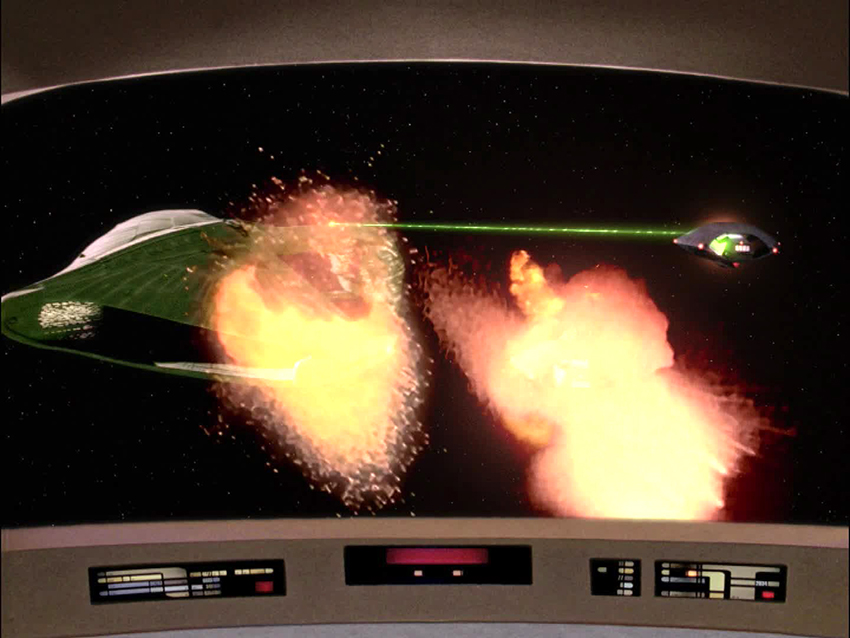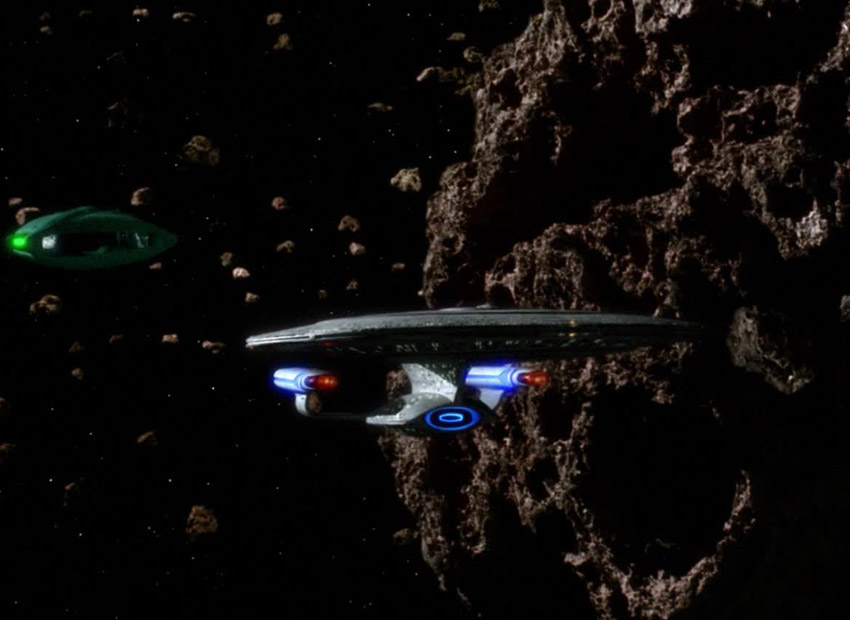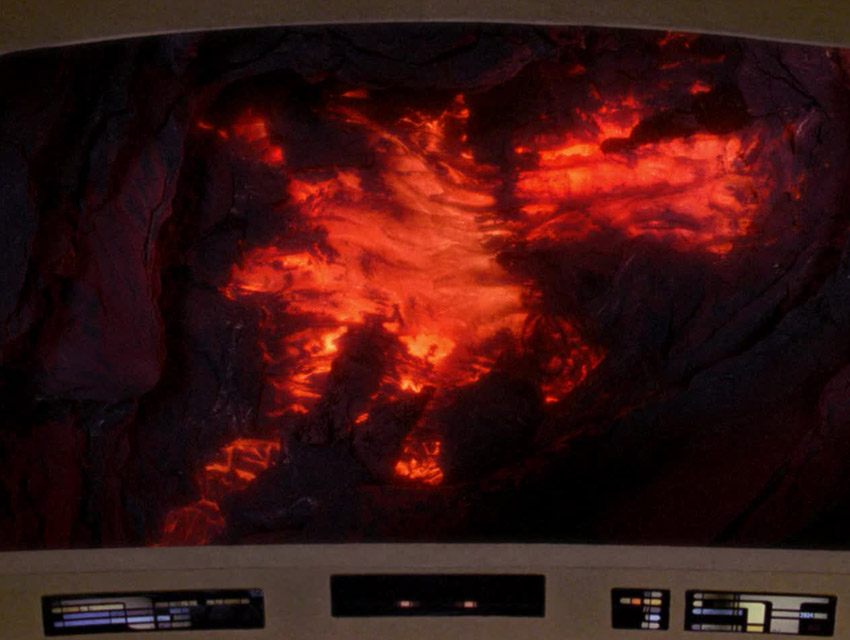In 'Unification, Part II', a Warbird decloaked and fired disruptor beams at the three stolen Vulcan ships - appearing to vaporize each with a one-half second discharge.

The last of the three Vulcan ships takes a hit as the first two explode. [1] Where size is concerned, we can scale the ships next to a Romulan Warbird. Warbirds, at slightly over 1,200 metres, have a forward section approximately one-quarter of overall length, i.e. 300m. Scaled to this forward section, the cargo vessels are of equal length and, as a rough guess, perhaps one-quarter the height of said section. The Enterprise-A is said to weigh some 1,000,000 metric tons; that being the case, the Vulcan ships of comparable length and greater volume are certainly no less than that figure. 1 x 10
6 tons is 1,002,000,000 kg. To be conservative, let us assume it is primarily composed of a metal with similar properties to Aluminum (900 J/kg K specific heat and boiling point of 2740 K).
Assuming a relatively high 305 K initial temp, we have the following:
| E | = | Mass x specific heat x Temperature increase |
| | = | 1.002 x 109 x 900 x 2435 |
| | = | 2.195883 x 1015 |
| | = | 2,195,883,000,000,000 joules |
or about 2,195 terajoules
I captured this scene at a rate of twelve frames per second, and each shot lasted a total of six frames - hence each shot lasted exactly one half second. The lower-limit power of the Warbird's disruptor beams is, therefore, no less than 4,390 Terawatts.
This compares unfavorably with the 100,000 TW figure for the Type X phaser arrays of the Galaxy class starship, but of course there is no reason to suppose that the warbird would fire on maximum power against defenceless targets. In addition, we know that at least some Federation vessels are composed of materials which are exceptionally difficult to heat - see the entry under the 'Materials' entry for details.
Had the Vulcan ships been comprised of Tritanium instead of Aluminium, the blast would have had to be some 450 times more powerful, or 1,975,500 Terawatts! Obviously this is also out of line with the Warbird being an approximate match for a Galaxy class starship.
On the other hand, it is not improbable that a civilian interstellar vessel would have a significantly weaker hull than a Starship, whilst still being much stronger than present day materials. If we take the 78,000 Terawatt figure generated under the 'Pegasus' entry below as fact, then the Vulcan ships would have a hull some eighteen times tougher than Aluminium. This is certainly feasible, but we are in the realms of manipulating the data to fit the conclusion here, so look at this one with caution.
In this episode a Romulan Warbird melts a significant portion of a large asteroid in order to seal the Enterprise-D inside a large chamber in the interior. The asteroid is described by the Encyclopedia (2nd edition, page 24) as 'moon sized'. No clear indication of the overall size is possible from the episode itself, but the when the Enterprise is on its way out of the asteroid Lieutenant Worf reports 'We have passed through two kilometres of the asteroid. Now within one kilometre of the surface.', indicating that the fissure is three kilometres deep. The fissure must have a diameter of at least six hundred metres in order to accomodate the Enterprise-D. The Warbird melts sufficient rock to fill the entire fissure.

The Enterprise and a Romulan Warbird near the asteroid. No shot in the episode shows the entire asteroid in scale to anything else. [2] 
This view from the Enterprise-D's bridge shows the rock cooling. [2] The time scale is uncertain. We see Admiral Pressman and Commander Riker on the Starship Pegasus when the attack begins; they beam to the Enterprise, then the scene cuts and shows them arriving on the bridge to see the rock cooling. Twenty five seconds of screen time elapse, but some twenty or so extra seconds would be required for the two officers to reach the bridge from the transporter room. The total time of the Warbirds barrage is therefore approximately forty five seconds.
The volume of asteroidal material melted can be calculated by the equation :
| V | = | pi x average radius of fissure2 x depth of fissure |
| | = | 3.142 x 3002 x 3000 |
| | = | 848,340,000 cubic metres. |
Assuming that the asteroid is rock the density, boiling point and specific heat capacity should be approximately 2,300 kg/cubic metre, 2500 K, and 720 J/Kg/K respectively. The energy required to melt this volume can be calculated thus :
| E | = | 8.4834 x 108 x 2300 x 2500 x 720 |
| | = | 3.512 x 1018 Joules |
The average power output of the Warbird was therefore equal to :
| P | = | 3.512 x 1018 / 45 |
| | = | 7.805 x 1016 Watts |
Or 78,047 Terawatts. This fits in exactly with the Warbird having slightly less firepower than the 100,000 TW output calculated earlier for the Galaxy class.
Colour key
References


